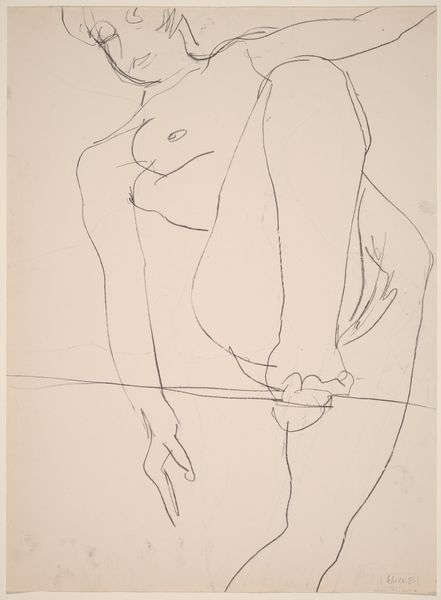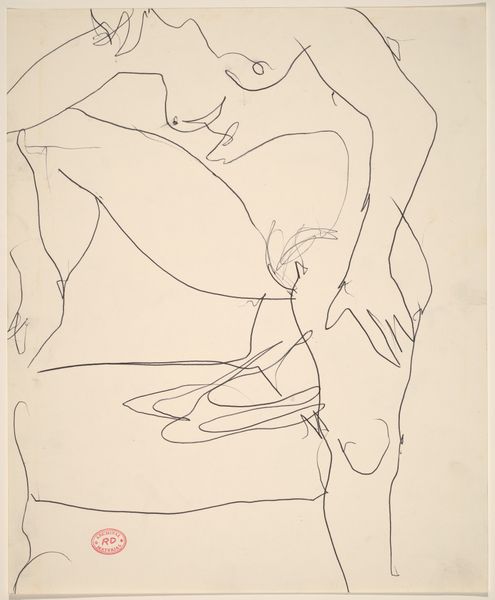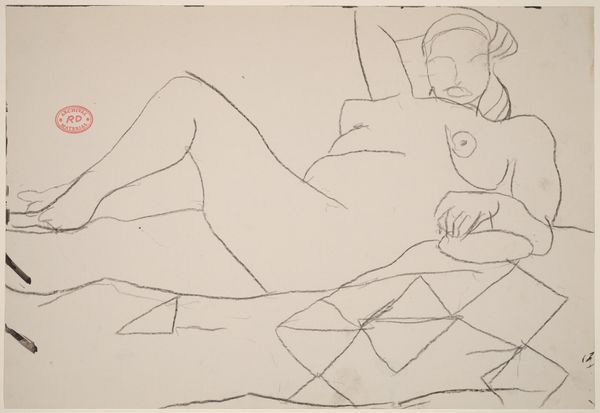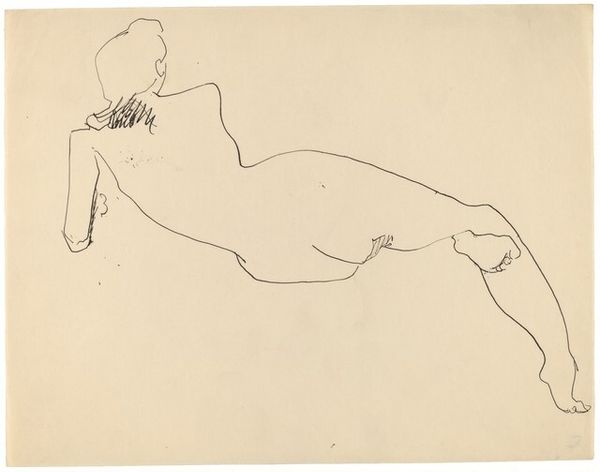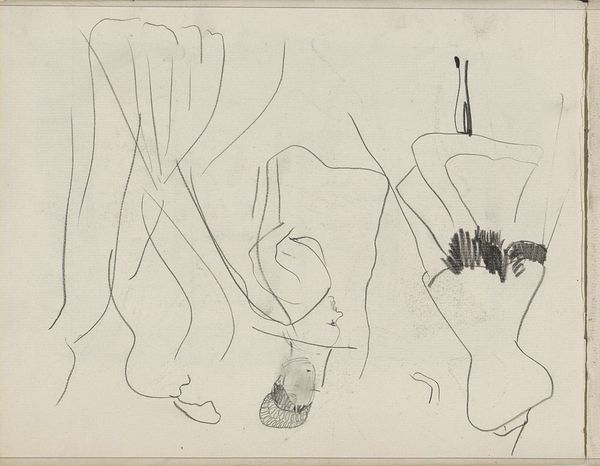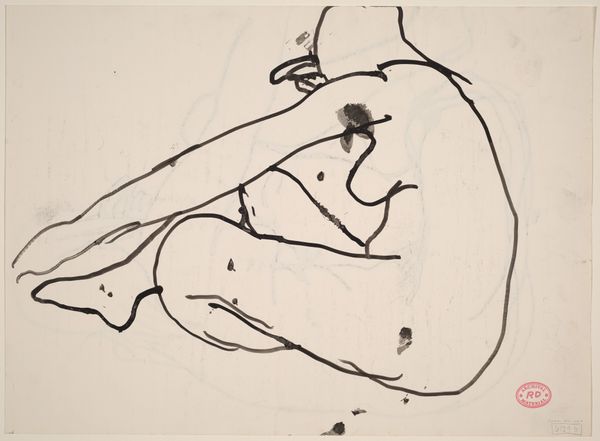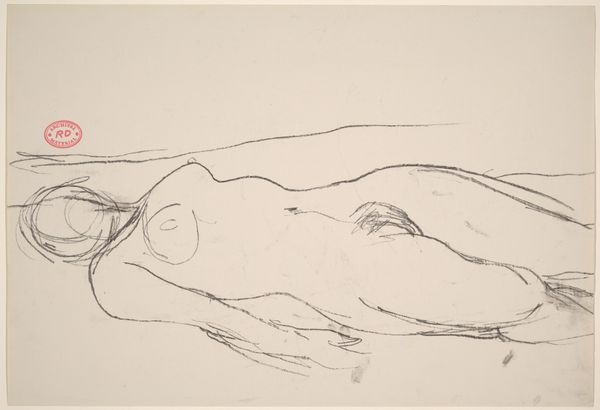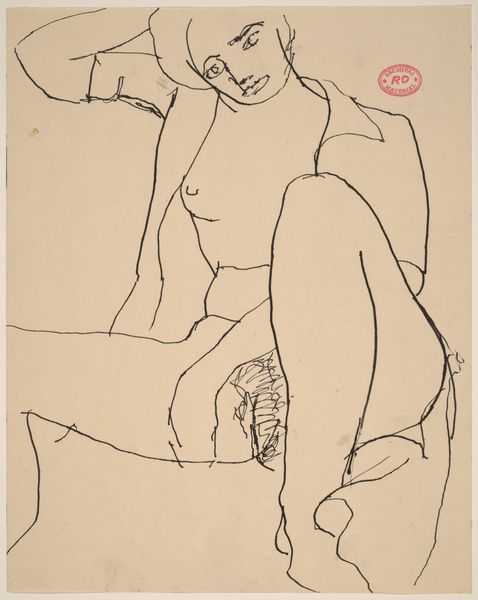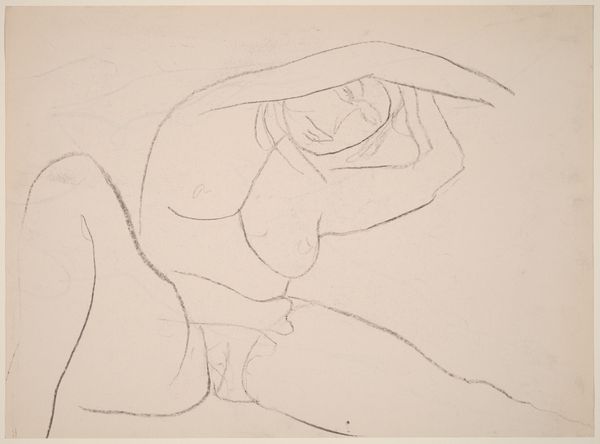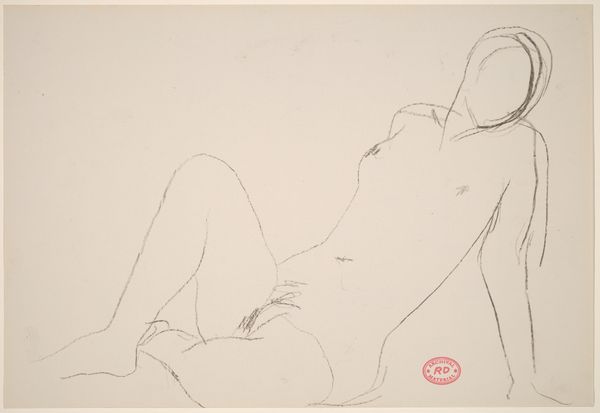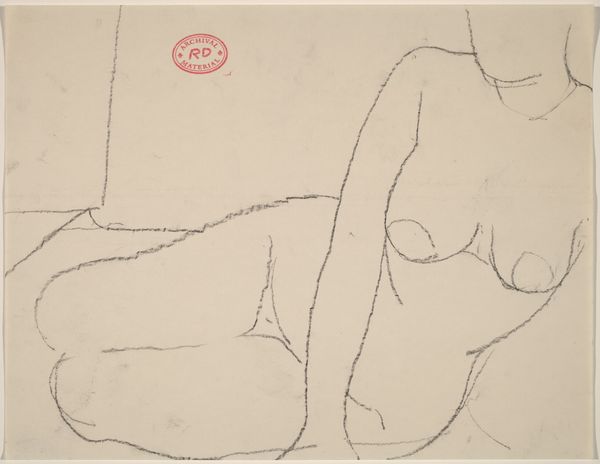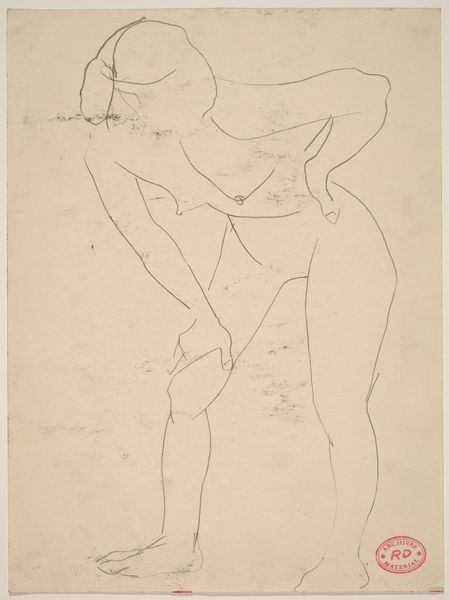![Untitled [reclining female nude with left arm and leg raised] by Richard Diebenkorn](/_next/image?url=https%3A%2F%2Fd2w8kbdekdi1gv.cloudfront.net%2FeyJidWNrZXQiOiAiYXJ0ZXJhLWltYWdlcy1idWNrZXQiLCAia2V5IjogImFydHdvcmtzLzgyNDAzOGM2LTc2NGItNGJjYi05YWRjLTA5NzEzMjZlZmRmOC84MjQwMzhjNi03NjRiLTRiY2ItOWFkYy0wOTcxMzI2ZWZkZjhfZnVsbC5qcGciLCAiZWRpdHMiOiB7InJlc2l6ZSI6IHsid2lkdGgiOiAxOTIwLCAiaGVpZ2h0IjogMTkyMCwgImZpdCI6ICJpbnNpZGUifX19&w=3840&q=75)
Untitled [reclining female nude with left arm and leg raised] 1955 - 1967
0:00
0:00
drawing, ink, pen
#
drawing
#
ink drawing
#
pen sketch
#
pencil sketch
#
figuration
#
bay-area-figurative-movement
#
ink
#
line
#
pen
#
nude
Dimensions: sheet: 31.8 x 43.2 cm (12 1/2 x 17 in.)
Copyright: National Gallery of Art: CC0 1.0
Editor: This is Richard Diebenkorn's "Untitled [reclining female nude with left arm and leg raised]," made sometime between 1955 and 1967. It’s an ink and pen drawing, very simple in its line work, but evocative. What can you tell me about it? Curator: Consider the *making* of this piece. It’s not just a representation, but the result of a specific labor. What kind of pen did he use? Was the ink mass-produced or handcrafted? What was the paper stock? The act of drawing itself is a physical process. We often overlook this material dimension when viewing art. How does focusing on the materiality of this piece, the ink and the paper, shift your understanding of it? Editor: I suppose thinking about the materials emphasizes the artist’s hand, the direct connection between his body and the image. Curator: Exactly! Think about the social context. It was made in the mid-20th century - how was drawing perceived? What was Diebenkorn trying to say, and to whom, with this relatively unrefined pen sketch of the nude? Its simplicity challenged conventional fine art expectations, and also speaks to accessibility – it’s raw, not overly idealized, in stark contrast to academic nudes made using more refined, time-consuming processes. It challenges our definition of high art. How do you interpret that? Editor: That makes me think of the art world’s evolving attitude towards what constitutes “art” - a move towards valuing process as much as product. Seeing the means of production can bring new understanding. Curator: Precisely! So, reflecting on Diebenkorn's materials and the act of creating the work changes the way you see the picture? Editor: Absolutely. I see it as less about the final image, and more about that critical space of making, a tangible expression of work made visible in a new, unexpected, democratic manner. Curator: Materiality certainly reframes its entire reception, and I think we can now better consider the agency and experience of the person who made it, through that simple ink and pen on paper.
Comments
No comments
Be the first to comment and join the conversation on the ultimate creative platform.
